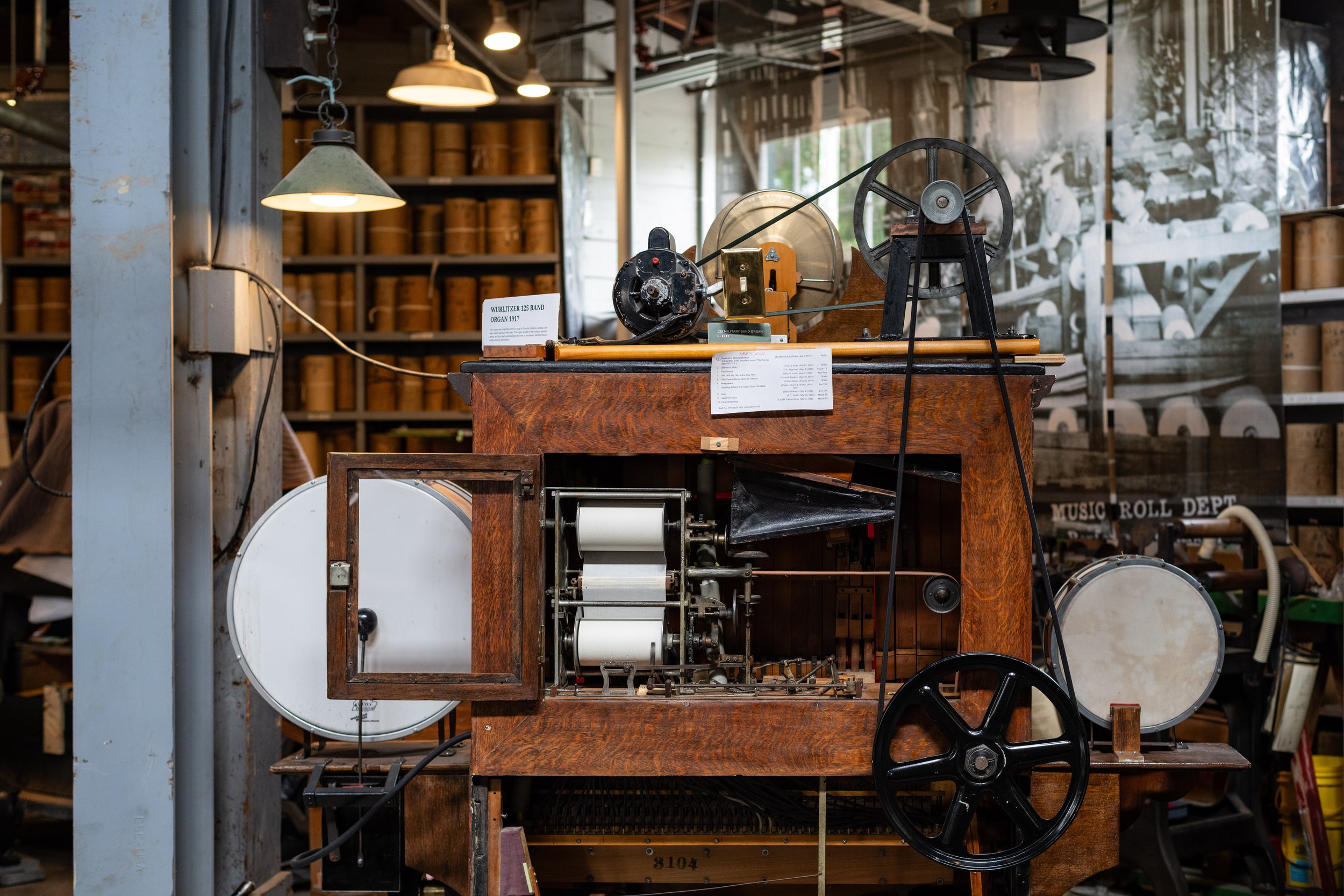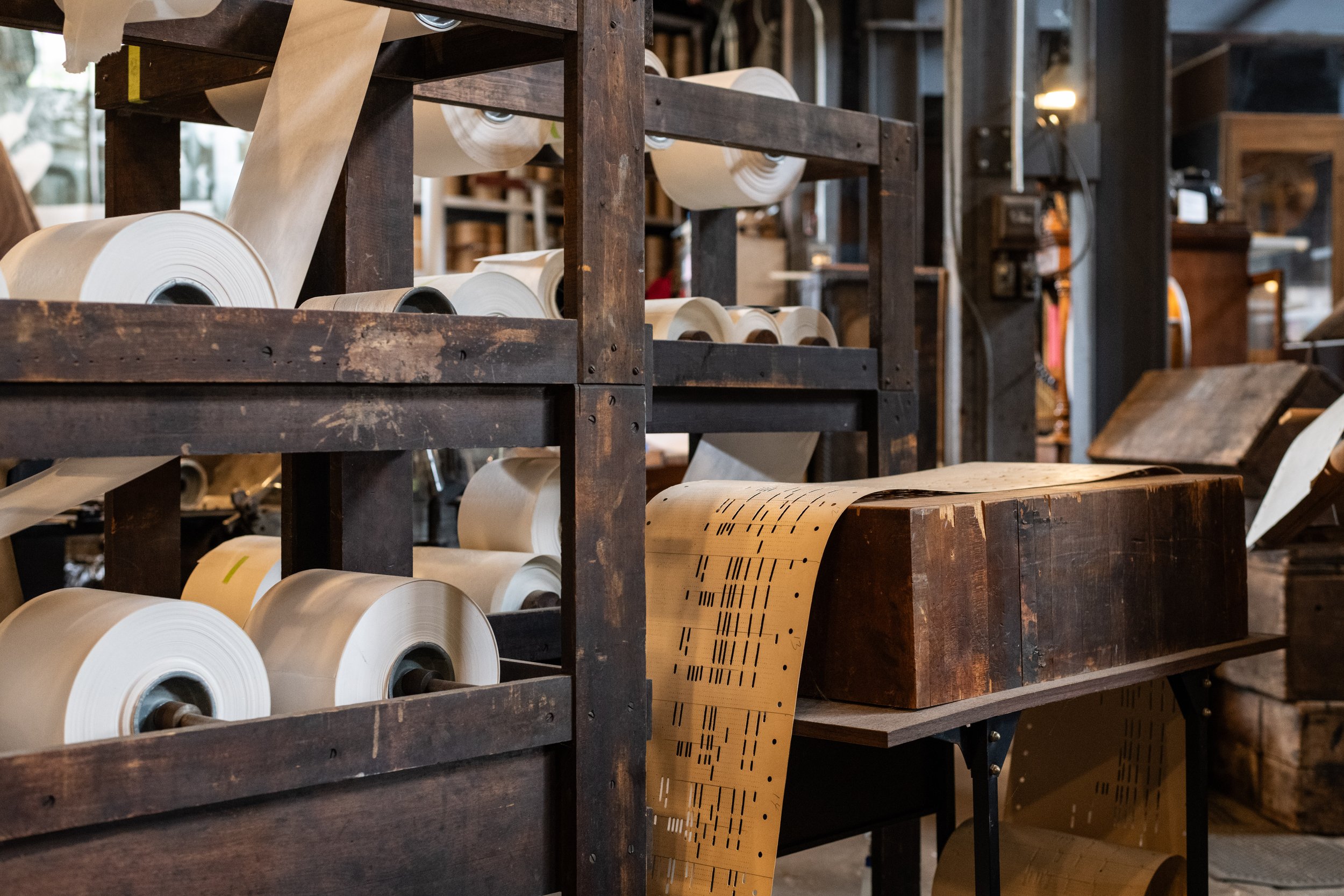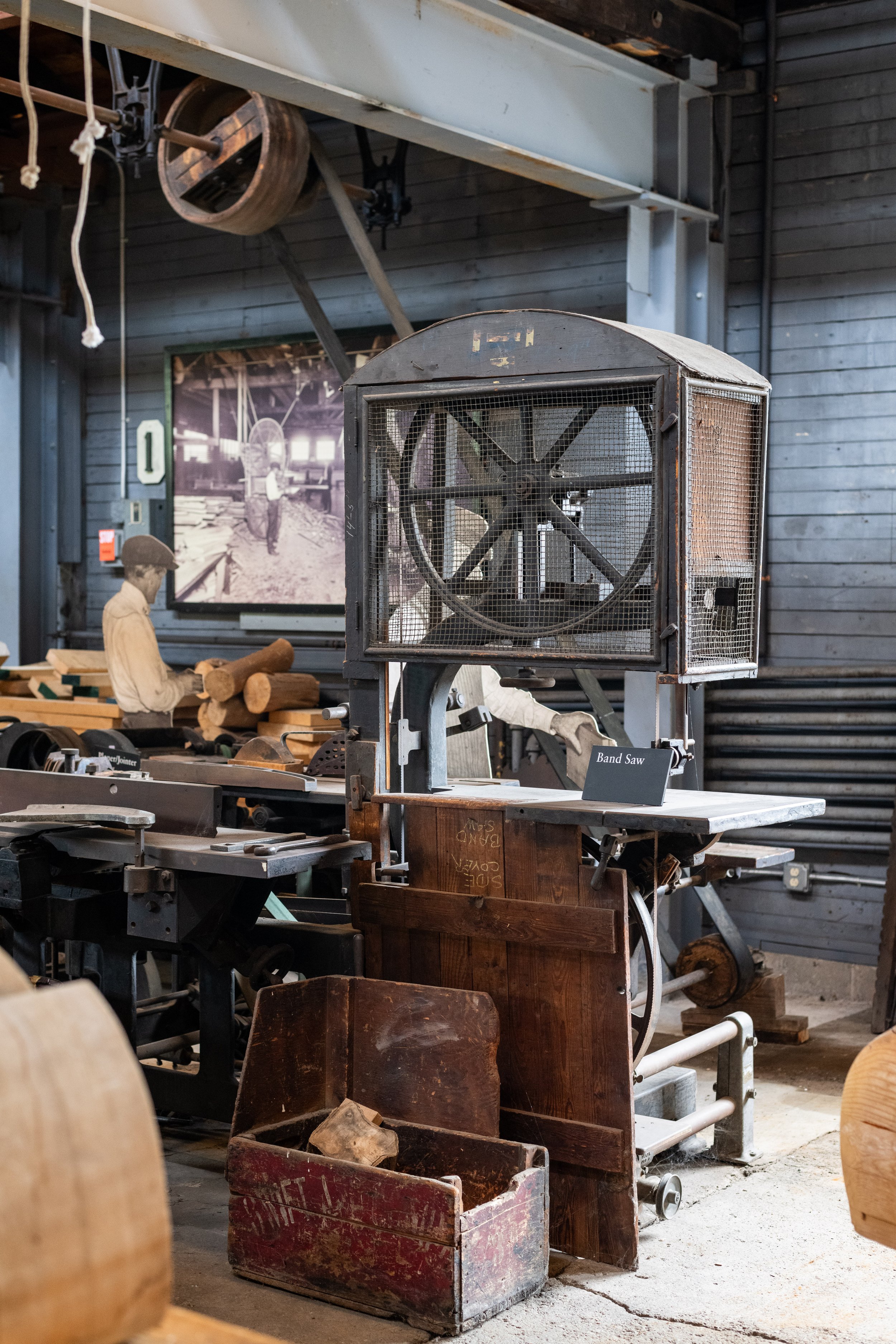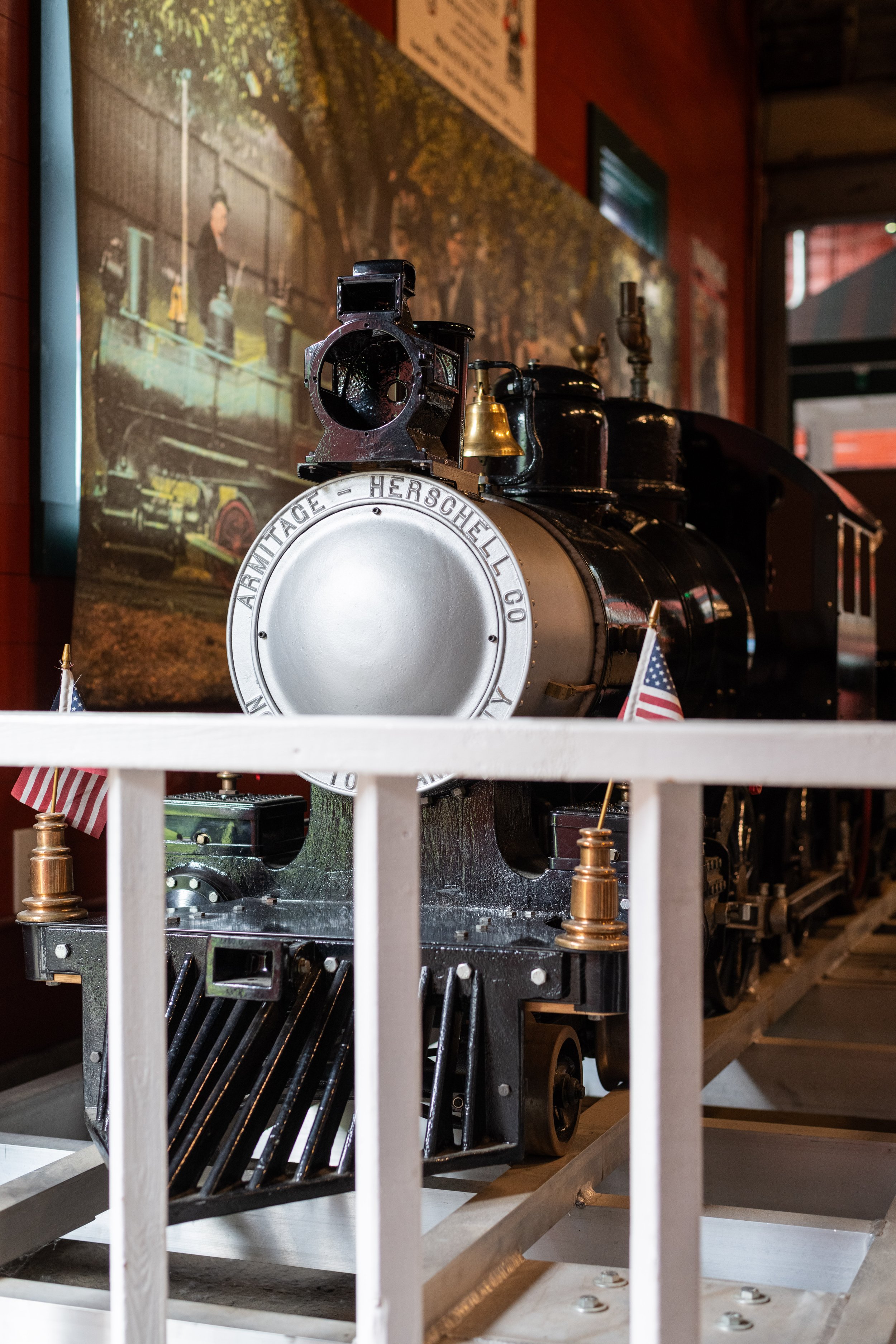I’d already ridden six Herschell carousels by the time I heard about the Herschell Carousel Factory Museum. I was working on another project about The E-J Shoe Company, a driving force behind the communities of Endicott and Johnson City in Upstate New York, when I stumbled headfirst into the world of antique carousels. E-J’s namesake George Johnson and family donated Herschell carousels in the Binghamton, NY area and made them free to ride in perpetuity. George Johnson wanted to be sure that no child would be denied the joys of a carousel ride for lack of money like he was in his youth. While taking a spin on one of those six carousels at West Endicott Park, I noticed a hand-painted motif on the carousel that read “Allan Herschell Co. Inc. Builders, N. Tonawanda, N.Y. U.S.A.” A quick Google search led me to the museum, and I knew I had to make a detour to North Tonawanda, NY (near Buffalo) to see where Binghamton’s carousels got their start.
The Herschell name has been associated with many different manufacturers over the years, starting in 1873 with the Armitage Herschell Company. The Buffalo area was a nexus of manufacturing in the early 1900s and the Allan Herschell Company would eventually grow to produce a wide variety of amusement rides including classics like the carousel, miniature trains, and kiddie coasters.
The Herschell Carousel Factory
The story begins with Allan Herschell, an entrepreneur who founded multiple iterations of the Herschell company throughout his lifetime. Around 1880, while on a trip to New York City, Herschell saw a magnificent new amusement ride dubbed the “Riding Gallery”. And what powered this new contraption? A steam engine! As luck would have it, Herschell was already manufacturing steam engines and gears in North Tonawanda. He sensed a business opportunity and returned to North Tonawanda to found the first of his carousel manufacturing ventures.
The Herschell Carousel Factory Museum, which occupies the Herschell Spillman Company’s 1916 factory, offers a glimpse into both the history of Herschell carousels and the manufacturing process used by the Herschell company. The North Tonawanda factory allowed the company to manufacture all components of its carousels in-house: the basswood or poplar animals were crafted by artisans on the carving floor, finished in the paint shop, and shipped out for final assembly via the Lockport Branch of the New York Central Railroad that once ran behind the factory. Allan Herschell also branched out into the internal combustion engine business, producing engines for automotive and aerospace manufacturers like Curtiss and Pierce-Arrow. Those engines were built at the Herschell-Spillman Motor Company Complex, a more modern factory that was recently covered into factory loft apartments and is also on the National Register of Historic Places.
The Wurlitzer Company, manufacturer of the large band organs which often accompanied carousel rides, had its manufacturing plant not far from the Herschell factory. Wurlitzer produced band organs through the North Tonawanda Barrel Organ Factory until 1939 and closed their North Tonawanda plant in 1973. A collection of master music rolls and other Wurlitzer relics are now on display at the museum. A fun note about the master music rolls - the Wurlitzer system works on a vacuum where punches on a paper music roll allow air to pass through and actuate instruments like drums or bells within the organ. Each master roll was punched by hand and a machine was used to create copies for distribution. The museum still produces copies from their master music rolls on request, which helps preserve historic music while allowing carousel organ enthusiasts to obtain the rolls needed to keep their organs running.
Inside the museum you’ll find an interesting collection of carousels, amusement rides, and band organs which are all restored and operational. The museum owns and operates two carousels: a portable kiddie carousel and a 1916-vintage No. 1 Carousel. Museum staff were happy to demonstrate the organs when I asked about how exactly they worked.
One highlight of the museum is a restored 1916 carousel, and museum admission gets you a few tokens for rides. There were a few things I noticed about the antique 1916 carousel which set it apart from more modern carousels I’ve ridden: for one, the hand-carved horses seem to have more life to them than their modern fiberglass cousins. I also liked the more friendly posture of the horses’ upturned ears, making them look like they’re just happy to be hanging around the carousel. Unfortunately the upturned ear design was abandoned early on because they were grabbed by riders and frequently broken off. There is also a “lovers tub” on the 1916 carousel which allows the rider to spin the tub around “spinning teacups” style. I wish more carousels had interactive features like brass rings or the “lovers tub” - it’d make them more fun to ride. I imagine the brass rings disappeared for insurance reasons.
The Herschell Carousel Company pioneered the iconic “Country Fair” style of horse, which forgoes saddles completely in favor of a more cartoon-style look. Horses were carved from blocks of basswood, chosen because the wood is easy to carve but lightweight and strong. The old paint shop has been converted to house the museum’s historical menagerie collection, which showcases animals ranging from ostriches to dogs. If you’re looking for a fun day trip - especially if you have young kids who can ride the “Kiddie Land Test Park” rides outside - then the Herschell Carousel Factory Museum is worth a stop!










